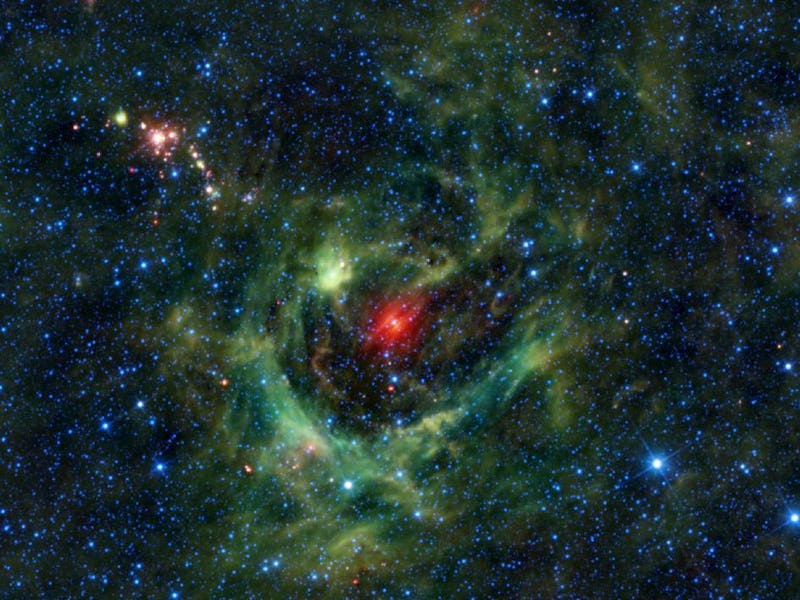In the spirit of St. Patrick’s Day, this green, cloudy nebula is the galaxy’s lucky charm. Sh2-205, unofficially named the Shamrock Nebula, is full of ionized gas and dusty arms which stretch out into a nice cradle for young stars to grow.
In this image taken by NASA’s Wide-field Infrared Survey Explorer, or WISE, you can see the polycyclic aromatic hydrocarbon grains, kind of like soot, show up in green under infrared, because they are hotter than the central star of the nebula, seen in red. The star, called CY Camelopardalis, named after the Camel Constellation where this nebula resides, is an extremely hot star with intense ultraviolet radiation and stellar winds that are pushing the dust and gas outward.
The other muted red spots are also young stars, and in the upper left corner is an open star cluster. Patches of stars like this are held together by magnetic force, working together to draw on elements of dust and gas to grow. Eventually, they will migrate from each other, but the stars are still in their very early stages.
Sh2-205 is a cloudy nebula in the Camel constellation.
The Shamrock Nebula sits in the Orion arm of the Milky way about 3,000 light years away and neighbors other well-known stellar nurseries like the Lagoon Nebula and the Rosette Nebula.
Of course, none of this would be visible if not for WISE. The spacecraft was launched in 2009 and decommissioned in 2011 after a two-year-long mission of mapping the entire night sky in infrared — twice. Then, it was reactivated in 2013 to monitor for near-Earth objects, specifically asteroids hurtling toward our planet.
It’s nice to know elsewhere in the universe, St. Patrick’s Day is getting some love.
